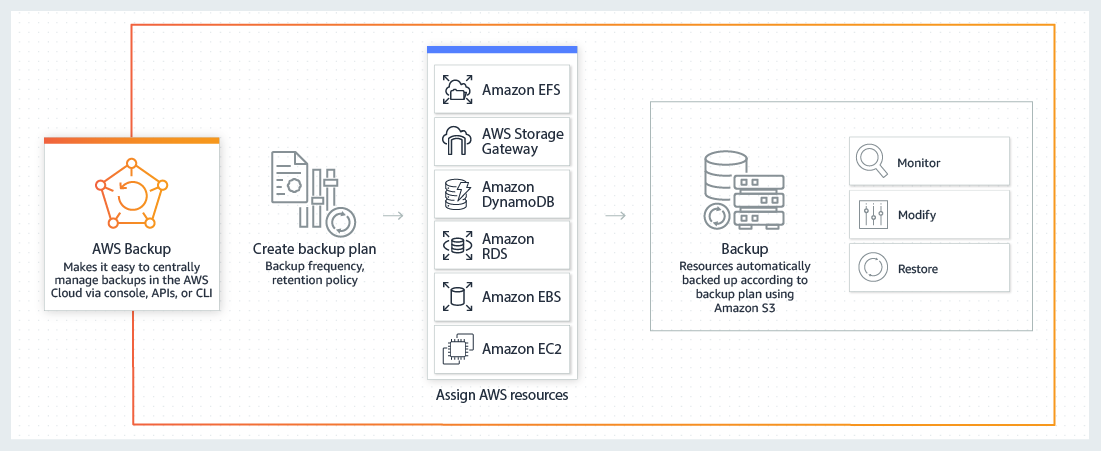Backups ¶
AWS Backup ¶
As defined by AWS
AWS Backup is a fully managed backup service that makes it easy to centralize and automate the backup of data across AWS services. Using AWS Backup, you can centrally configure backup policies and monitor backup activity for AWS resources, such as:
- Amazon EBS volumes,
- Amazon EC2 instances,
- Amazon RDS databases,
- Amazon DynamoDB tables,
- Amazon EFS file systems,
- and AWS Storage Gateway volumes.
AWS Backup automates and consolidates backup tasks previously performed service-by-service, removing the need to create custom scripts and manual processes. With just a few clicks in the AWS Backup console, you can create backup policies that automate backup schedules and retention management. AWS Backup provides a fully managed, policy-based backup solution, simplifying your backup management, enabling you to meet your business and regulatory backup compliance requirements.

 S3 bucket region replication ¶
S3 bucket region replication ¶
 Buckets that hold data critical to business or to application operation can be replicated to another region almost
synchronously.
Buckets that hold data critical to business or to application operation can be replicated to another region almost
synchronously.  This can be setup on request to increase durability and along with database backup can constitute the base for a
Business Continuity strategy.
This can be setup on request to increase durability and along with database backup can constitute the base for a
Business Continuity strategy.
Comparison of the backup and retention policies strategies ¶
In this sub-section you'll find the resources to review and adjust your backup retention policies to adhere to compliance rules that govern your specific institutions regulations. This post is a summarized write-up of how we approached this sensitive task, the alternatives we analyzed and the recommended solutions we provided in order to meet the requirements. We hope it can be useful for others as well.
Leverage Confluence Documentation
You'll find here a detailed comparison including the alternative product and solution types, pricing model, features, pros & cons.